Below, I will draw attention to the many input devices used over the years and discuss why each one is or is not important, why each one was or was not successful, and rate them based on my personal preference. In my rating, I will consider comfort, ease of use, and the ways in which software developers used it. This article will include only core input devices. Don't expect to see the NES Light Gun or Samba De Amigo Maracas here. Also, controller redesigns will be ignored or only briefly mentioned, except in the case of the PlayStation controller redesign, the DUAL SHOCK, because it became the main controller later in PSX's life.
The Mouse and Keyboard
This is the most widely used input device and arguably the most influential. Though I do not personally care much for this input method for gaming, it's easily the most versatile, offering up a seemingly endless number of ways to customize the experience to each user's preference. The biggest reason I don't care much for this method is a lack of analog controls. Aiming with the mouse is only matched by the Wii Remote, but the lack of being able to control with precision the speed at which my in game avatar moves, I feel, hinders the experience.
The mouse and keyboard setup is superior (except to the Wii Remote) for use in first person shooters and real time strategy games, but that's about where it's usefulness ends. Platforming is clunky, driving is very difficult, and sports games feel odd in this setup.
The most widely used and oldest form of game input around.
Versatile, yet limited and intimidating. (3 out of 5)
Nintendo Entertainment System
The NES game pad is the pad that started it all. There were game pads before it, but none of them have had the influence of the standard NES controller that came bundled with the main hardware. It wasn't pretty to look at, it wasn't complicated, it juts did what it was supposed to do. Four directional buttons (located on a single D + pad), a start button that was actually required to start most games, a select button that was actually required to select some menu options, and an A and B button. Despite the numerous buttons found on today's more complicated controllers, a large number of games that are developed today could be played using just the D + pad and the A and B buttons found on the NES controller.
For it's time, this thing did everything that was required of it and everything that anyone ever asked it to do. It would be a decade before its creator introduced us to analog control or even a need for such a thing. This one gets a knock simply for not being very comfortable to hold. It's not UNcomfortable, it just doesn't fit in one's hand as nicely as it could because of it's square corners.
Even if you've never see one in person, you likely recognize this iconic image.
This one scores high for doing exactly what was asked of it. (4 out of 5)
The Sega Genesis was released as the anti-Nintendo. But its input device borrowed heavily from the NES controller, making some much needed changes in it's form to make it more comfortable to hold, eliminating the select button, and adding a third action C button to the AB format of the NES.
I only owned a Genesis for a very short time, and what time I did spend with it was spent playing Sonic the Hedgehog. Sonic used the directional pad for movement and all three buttons did the same thing: jump (also activate Super Sonic, make tails fly, stick Knuckles to walls, and activate the shield ability), so I never got any use out of that third button. Adding a button, though, isn't a bad thing, and it was much more comfortable to hold. However, gaming was changing, and as you'll see on the next controller, more buttons allowed for much more variety in gameplay than this controller allowed.
Much improved over the NES, but not ready for more demanding games. (3 out of 5)
Super Nintendo Entertainment System
This is the controller that all other controllers owe their lives to, for without this one, modern gamepads may not have evolved into the superior devices that they are. The SNES controller added two XY face buttons to the NES's AB setup, and also introduced us to shoulder buttons, labeled L(eft) and R(ight). To make things that much easier to find without having to stare at the controller, the AB buttons stuck out while the XY buttons had a nice dip in them. This added attention to detail just made for a nicer experience.
The new face button layout made pressing multiple buttons much easier. Forcing Mario to run in Super Mario World simply meant laying your right thumb across the face of the controller and applying pressure at the base of your thumb to make Mario jump.The shoulder buttons allowed your unused index fingers to add a new depth to the gameplay. Taping a shoulder button in Super Mario Kart added a hop that would put your kart into a power slide for those tight corners, all without having to remove your thumb from the accelerator.. Holding one or the other caused Fox McCloud's Arwing to rotate onto it's side in the chosen direction, allowing you to navigate between close objects.
All around, this gamepad is the most influential, one of the best executed, and one of the best deployed controllers ever created.
Your favorite controller was likely modeled after this. (5 our of 5)
Sega Saturn (NA model 1)
I've never played a Sega Saturn and, consequently, never used it's controller. It appears though, that very little was changed from it's predecessor. I don't believe it's fair to judge something I've never used, so I wont.
I've never used it, but the NA model 1 looks like a mildly tweaked Genesis 6 Button controller.
PlayStation (SCPH-1010)
This is the very first PlayStation controller ever made. This is before the dual analog sticks. This controller obviously gets its design from the above mentioned Super NES controller. Instead of a directional pad, the SCPH-1010 had individual up, down, left, and right buttons. Sony added two additional shoulder buttons to the SNES design, and grip handles on either side of the controller. In an attempt to separate itself from the pack, the PlayStation controller used shapes as button labels instead of letters. This later became a very important part of the PlayStation brand, as the circle, square, X, and triangle are used in much of Sony's promotional material for the PlayStation brand.
What's very interesting about the design of the SCPH-1010 is that it lacks any sort of analog directional control. The PlayStation was the first console capable of generating true 3-dimensional characters and environments without the help of additional hardware (which is how the Super NES was able to achieve the result that is Star Fox and Stunt Racer FX). So, not having true 3-dimensional control is curious. Also, considering this is a 1st party piece of hardware, it feels like a cheap third party knock-off, probably due to it's extremely light weight. Otherwise, it's a solid controller.
Overall a solid piece of hardware, but the lack of analog directional
controls and weight keeps this one from perfection. (4 out of 5)
Nintendo 64 (NUS-005)
The N64 controller is one of the more unique controllers that you'll come across. The core of it's shape resembles a SNES controller, but the third grip that houses the analog stick added to the middle really sets this one apart from the pack. Holding the controller in standard position allowed the D + pad and L-shoulder button to be used for side scrollers. Moving your left hand to the center grip gave access to the analog stick and the Z-trigger, which revolutionized the way 3-D action games were played. The C-buttons found to the far right are the spiritual successor to the right analog stick, used in most games to control the camera.
In Super Mario 64, the analog stick gave true 3D control of Mario's direction and also allowed for variable speed. Gently pressing the stick in one direction caused Mario to tip-toe in that direction. Pressing it to it's extreme caused Mario to run. This was very important, as sneaking up on sleeping enemies rather than charging them would not disturb their slumber. Built into the housing of the analog stick are eight corners, making finding that perfect position to up, down, left, right, or the four directions directly in between easy to find.
The C-buttons allowed for limited control over the camera, which was entirely new concept that would not have been possible without the C-buttons. Up until that point, the camera tried to position itself in what the game designers thought was the best position or simply "chased" the player, ensuring that the camera was always positioned behind the player. This was a good fix for hardware limitations, but if the player wasn't happy with the position of the camera, there was nothing that could be done about it, short of moving the character in hopes of manipulating the camera to a more desirable position.
Not shown in the picture below is the first trigger found on a gamepad, the Z-trigger. The Z-trigger was used mostly as a substitute for the L-shoulder button. In GoldenEye007, the trigger was used to fire your weapon, making the action of firing a gun feel more natural. But, it wasn't until The Legend of Zelda: Ocarina of Time was released a year later that its true potential was realized. The Z-trigger was used to force the camera to position itself in an over the shoulder position, keeping Link and the targeted enemy in frame at all times. This was known as Z-targeting, and is still used in many action platformers today.
Also not shown below is the N64 controller expansion port. Originally designed to hold the largely ignored N64 memory cards (the N64's cartridge based media allowed for game saves directly to the cartridge, making the memory card pretty useless except for games that, curiously, required one), the expansion port eventually became home to the first successful force feed back device, the N64 Rumble Pack. The expansion port also made Pokemon Stadium possible, allowing players to use their Game Boy Pokemon games to battle Pokemon on their N64.
The SNES controller may be the influence for all controllers to be released since then, but the N64 NUS-005 is responsible for many innovations that we've seen utilized in controllers since its release.
Influenced by the SNES, but still a trend setter.
This is the father of modern gamepads. (5 out of 5)
PlayStation DUAL SHOCK
This controller was the second 1st party controller released for the PlayStation and has been the standard controller for both the PlayStation 2 and PlayStation 3, though the PS3 model is different enough that I will write about it separately. DUAL SHOCK added force feed back, solved my biggest complaint with the original design and created the reason that I hate this controller.
Added just below the start and select buttons were two analog sticks. These sticks were added so that players could have analog control of the gas and brake in Sony's new driving sim, Gran Tourismo. It also solved the problem of not having true 3-dimensional control in 3D platformers such as Crash Bandicoot. In solving this problem, the position and design of these two sticks is absolutely horrible.
The two sticks have a concave (protrudes outward like the top of a mushroom) curve in them, instead of the convex (dips inward) curve found in the N64 analog stick and virtually every other analog stick ever created. This bump makes gripping the stick with the tip of your thumb difficult and awkward. My thumb often needs to be reposition back to the center of the stick because it rolls around the top of the stick.
This lack of grip makes for another problem, caused by a separate problem. The sticks are very close together. If I need to press them towards each other, I find that my thumbs often meet each other, meaning that one or both sticks can not be pushed as far as I'd like. Switching the left analog stick with the directional buttons would solve this problem, and make holding the controller more comfortable.
My final complaint, and this is a minor one, is with the shape of the housing for the sticks. They're perfect circles. The stick will not be forced into any of the eight directions of the directional buttons without you finding it yourself. This may be desirable for some, as you won't naturally by forced into one of those eight directions giving you more precision, but it's something that's always bothered me.
All of the positives of the original SCPH-1010 are still here. An additional positive is that the PlayStation, PSOne, and PlayStation 2 all used the exact same controller, the DUAL SHOCK. This was a very nice touch, one that I'm sure would have stuck had wired controllers not gone the way of the buffalo with the current generation of consoles.
The controller is still solid like the SCPH-1010, but the horrible sticks kill this one for me.
I'm not the only one who can't stand this controller design. (2 out of 5)
Sega Dreamcast
Sega's last entry into the console market produced a very basic controller design and it worked very well. The absence of a second analog stick was a curious decision, considering that the DUAL SHOCK had been on the market for sometime before the Dreamcast's release, but over the controller is solid.
The Dreamcast used two analog L and R triggers instead of shoulder buttons. Once again, this had the same benefits that the Z-trigger on the N64 had, with the added benefit of pressure sensitive control. Where the DUAL SHOCK's analog sticks were used to control the gas and brake for racing games, the Dreamcast's analog triggers allowed for control of the gas and brake with the player's index fingers, freeing up the player's thumbs for steering and other actions that could be performed with the face buttons.
The Dreamcast also used two expansion ports, similar to the N64 expansion port. Unlike the N64 expansion port, the Dreamcast ports were used mostly for the Dreamcast's unique memory card, which was itself a miniature game system.
The Dreamcast controller and VMU. A solid controller, but it's
minimalist design holds it back from greatness. (3 out of 5)
Nintendo GameCube (DOL-003)
The Nintendo GameCube controller looks much more like the DUAL SHOCK than the N64 controller, though it has many differences. The left analog stick and the D + pad have been swapped, making for a much more comfortable hand position and eliminating the problem I had with the DUAL SHOCK sticks being too close together.
The shoulder buttons have been replaced with analog triggers that feel more like buttons than triggers and were never fully utilized by developers. For the most part, the triggers were used just as if they were buttons. Mario Kart still used the face buttons for gas, brake, and weapon firing, and the triggers as the power slide buttons. F-Zero GX did use the triggers pressure sensitive nature for more controlled power slides, which was executed flawlessly, but this new feature was mostly ignored.
Nintendo curiously placed a Z-button just above the R-trigger, but had no like button on the left side. The Z-button was oddly shaped and cumbersome to use.
In an attempt to appeal to a broader audience, Nintendo shaped each of the face buttons differently, making it easier to identify each button by touch rather than having to memorize where each button was. This worked fantastically for 1st party titles and third party exclusives that were designed around this controller, but was terrible for multiplatform games, particularly ones that required the A and B button be pressed at the same time.
The C-stick, while a nice addition, just doesn't feel as solid as other right analog sticks.
A future wireless design was released. This was the first wireless controller that really worked and didn't change much about the DOL-003 design, though it removed the force feedback to conserve battery life and was slightly bulkier to house the batteries.
I love the position of the analog sticks, even though the C-stick is less than great.
The controller worked well, but only in certain situations. (3 out of 5)
Xbox
The Xbox controller is an odd one. Microsoft claims to had done a huge amount research before deciding on the design of what was dubbed "Fatty" or just "Fat" by the gaming community, though it was met with almost universal disdain.
Resembling a potato more than a gamepad, the Fatty used the same stick layout as the GameCube, a face button layout resembling the N64's A, B, and four C buttons, and the two analog triggers found on the Dreamcast controller. It's only real problem was that it was unnecessarily big and had a round face instead of flat one, making some of the buttons awkward to press. This is especially true of the unnamed black and white buttons that are positioned above the standard four letter labeled face buttons.
Their answer to the D + pad was more of a disk. The disk was designed to feel more like an analog pad than the digital pads of the past. This design made it difficult to press the disk in any of the eight standard directions, resulting in most players using the analog stick for simple menu navigation, and is universally hated.
Some people liked the odd shape, claiming it formed to their perhaps larger hands better than other controllers that were available. Most people hated it. In response, the Xbox "S" controller, which was the design shipped with the console in Japan, was released worldwide. This controller moved the start and "back" (instead of select) buttons to the extreme left of the controller, placing them on the other side of the directional disk, and the black and white buttons below the four standard buttons.
This controller has its problems, but over time, many of it's problems could be ignored. (3 out of 5)
Xbox 360
As far as modern standard gamepads go, they don't get better than this one. It's like all of the best features of all of the gamepads of the past got married in one big polygamist wedding and produced this. The only problem being that they married the directional disk of the Xbox Original controller instead of the D + pad of the SNES.
Two perfectly placed thumb sticks with convex tops for a snug fit, four solid face buttons in a standard arrangement, two analog triggers, an L and an R shoulder button, a nice, big home button for easy navigation of the console's operating system, and just the right amount of bulk to bring it all together. This is the controller that the Xbox Fat and even the S controller had aspired to be.
This is also the first wireless controller to be shipped with a console and uses a wireless technology that does not require line of sight with the unit.
If it weren't for that awful directional disk,
this would be the best standard gamepad ever created. (4 out of 5)
PlayStation 3 SIXAXIS (SCPH-98040)
Welcome to the worst controller ever fathomed by man. This abomination from the pits of hell, created by Satan himself, takes everything I hated about the DUAL SHOCK and added even more to hate.
You see, after Nintendo revealed the Wii Remote, which utilized an accelerometer and infrared beam for motion tracking, Sony decided they needed to get in on this new motion control gaming. So they took their already bad DUAL SHOCK controller and added multiple accelerometers, making the worlds worst dual analog stick controller the worlds worst motion controller. This extremely inaccurate system of accelerometers made for a sometimes too responsive, sometimes not responsive at all motion controller that was ignored early on after Lair proved to the world that this the worst idea since a $700 priced console.
The SIXAXIS also lacked any sort of force feedback. This is a minor complaint, but worth pointing out. Later, Sony released the DUAL SHOCK 3, which is a SIXAXIS controller that added force feedback back into the mix. Sony kept the accelerometer in the DUAL SHOCK 3, which I assume does nothing but keep the price tag high, since absolutely no one uses it.
The SIXAXIS and DUAL SHOCK 3 both use bluetooth for wireless connectivity. The built in rechargeable battery is a nice touch as well. This is a feature that all other wireless controllers lack.
The original DUAL SHOCK was given a 2 simply so I would
have room to score this piece of junk lower. (1 out of 5)
Nintendo Wii Remote and Nunchuck
The Wii Remote is easily the most unique main controller of ever created. It gives the precision of a computer mouse without the sacrifice of analog controls that a keyboard comes with, thanks to the Nunchuck that it also packaged with the console, though not all Wii games use the Nunchuck.
The Wii Remote uses an accelerometer and infrared sensor to track the player's movement, making for some very interesting game play. Swinging the remote like a golf club results in the player's avatar doing just that, swinging a golf club, or a baseball bat, or a sword, or whatever the game requires. It wasn't perfect, but it was pretty darn close.
Holding the remote on it's side made for a more traditional gamepad, but the face has very few buttons, so only very simple games could be played that way.
The addition of the Wii Motion Plus gyroscope (or the later released Wii Remote Plus, which combines the two units into one) made for a 1:1 experience. With the added gyroscope, the player's avatar moves its hand exactly like the player does. It's a pretty neat experience.
The Nunchuck housed only a single analog stick, a C-button on the back, and a Z-trigger underneath the unit. The Nunchuck is tethered to the Wii Remote via a short cable. It would have been nice if the Nunchuck were wireless, as the cable can get in the way if you're an expressive player.
The Nunchuck port on the Wii Remote is also used to connect a more traditional gamepad, the guitar controller, and a number of other accessories.
Unfortunately, the Wii Remote was mostly a gimmick for third parties, and, like the GameCube controller before it, was only really able to be appreciated when playing a 1st party title. However, unlike the GameCube controller, when the Wii Remote is used properly, it's a delight to use.
This unique controller is responsible for the Wii's success,
but is also the reason many quality third party games skipped the Wii. (4 out of 5)
Xbox 360 Kinect and PlayStation Move
These are not main input devices, but they're still important to the way we play games. Both of these are very late responses to the Wii remote.
Kinect achieves its goal, providing players with a unique experience. It's controller less interface is odd at first and will never replace the standard gamepad, but it provides an experience that not even the Wii Remote can fully provide. A simple flick of the wrist is usually all the Wii Remote needs, reducing it to something that just replaces pressing a button. Kinect actually engages the player's entire body. When playing volleyball on Wii, pressing a button is required make the player jump, setting the played up for a spike. On Kinect, the player actually has to jump and swing his arm. It's actually feels like you're playing volleyball and is an excellent workout. It's only weakness is that the camera does not process the information as quickly as the Wii Remote does, causing a delay between what the player did and what happens on screen.
Move is just crap. It's a Wii Remote; a less accurate Wii Remote. When Microsoft set out to respond to the Wii Remote, they came up with something familiar to Wii users, but completely different. Sony said, "Hey, let's do that but use the PlayStation Eye instead of the sensor bar." The problem is that Move suffers form the exact same thing that Kinect does. The response is delayed due to the camera not processing the information fast enough to create a 1:1 experience. Also, because Move uses a colored ball instead of a defined point, Move lacks a pointer, making aiming a projectile weapon feel less organic. There is no pointer on Move, therefore, there is nothing to point with.
Kinect is fun, but suffers from delay and a lack of vision. Much like with the Wii Remote, third party developers will likely produce a lot of shovelware and the hardcore will be ignored, even though the potential is huge. Move is a less accurate Wii. If you want a Wii, buy a Wii, unless teh HD gaffix matter more to you than gameplay, then, by all means, waste your money on this thing.
I know a lot of you will disagree with me, especially those you like the DUAL SHOCK design. I assume this monstrosity has gone unchanged for over a decade for a reason. Sound off below.



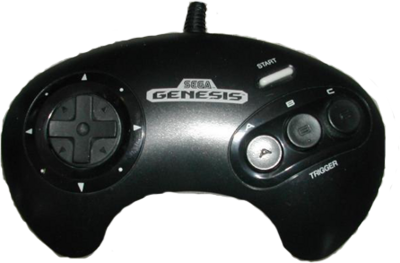


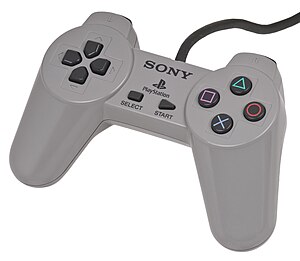

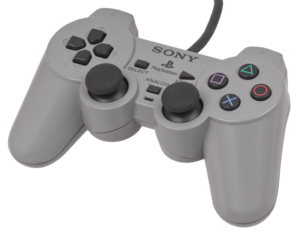
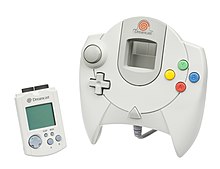
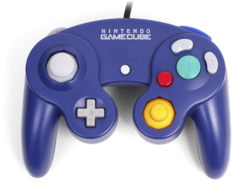




7 comments:
I gave this article a "STFU" because your opinion of the DUALSHOCK controller.
I mean, rated the Fatty higher than the DUALSHOCK? Your argument fell apart right there. But, the fatty does have endless usess. just none of them video game related:
If you went into combat with the Fatty, twirling it over your head like a medieval flail, your enemies would quickly turn and run.
You could also put a couple on top of mobile homes to weigh them down so that hurricanes won't topple them over.
All it takes is some creativity and those controllers have many uses.
As odd as the Fatty was, it never impaired my ability to play whatever game I was playing with it. The first reason I don't own a PlayStation 3 is because Melissa wont let me get one. The second reason is because I'd have to play with that terribly designed controller.
All they need to do is swap the location of the left stick with the directional buttons and I'd be able to overlook the concave shape.
I'd say it was just me, but one of the most influential game designers of our time has held software back from the PlayStation 3 based entirely on his negative opinion of the DUAL SHOCK controller. No matter what you think of him or the games he designs, having a publisher and developer as big as Epic Games skip over your console becuase the controller sucks speaks volumes.
Fanbois. Psshhh.
Also, the Fatty became obsolete as a weapon when the Xbox 360 Power Brick showed up. The Power Brick has a built in handle. The Fatty had one of those quick release cords, making it ineffective as a rat flail.
Crap, I forgot about the quick release. That actually ruins most of my ideas.
I'd say that the Fatty's slanted face buttons were a bit of a hindrance. I'd go to press the X button and find it not located where it should be. Sure, I got used to it, but seriously?
EPIC doesn't want to develop for the PS3 because the controller layout does suck for FPS's and EPIC doesn't know how to make other games. Besides, EPIC abandoned their dedicated PC gaming fan base in favor of the XBox controller? I'm pretty sure there is something else going on there *cough*MicrosoftXBox360exclusivedeals*cough*
I've never heard anyone say that the DUAL SHOCK layout prevented them from enjoying such-and-such game. But I've heard plenty of people say to avoid such-and-such game on XBOX because of the atrocious D-Pad.
I'm really not sure how it's possible to defend the dual analog layout other than "I like it better" because there really isn't anything wrong with it. The controller is comfy in my hands, the buttons are all easily accessible, and I don't have a problem using the sticks.
Contrast that with a controller that has a seriously flawed D-Pad, something I actually do tend to use a lot, and the DUAL SHOCK comes out on top.
Yes, it was seriously flawed, but completely avoidable. I've never been forced to use that D-pad. I'm forced to use those awful sticks.
I rated it the Fatty higher than the DUAL SHOCK because I was given the option to never use the thing I hated about it. I'm not given that luxury on the DUAL SHOCK.
The dualshock controller prevents me from enjoying vdeo games and life. Its terrible stick placement has crippled my thumbs. You cant afford to get things crippled when you're already 75% handicapped. Thanks a lot playstation...
Thank you. I hadn't even looked at it like that. Owned. DualShock sucks.
Post a Comment